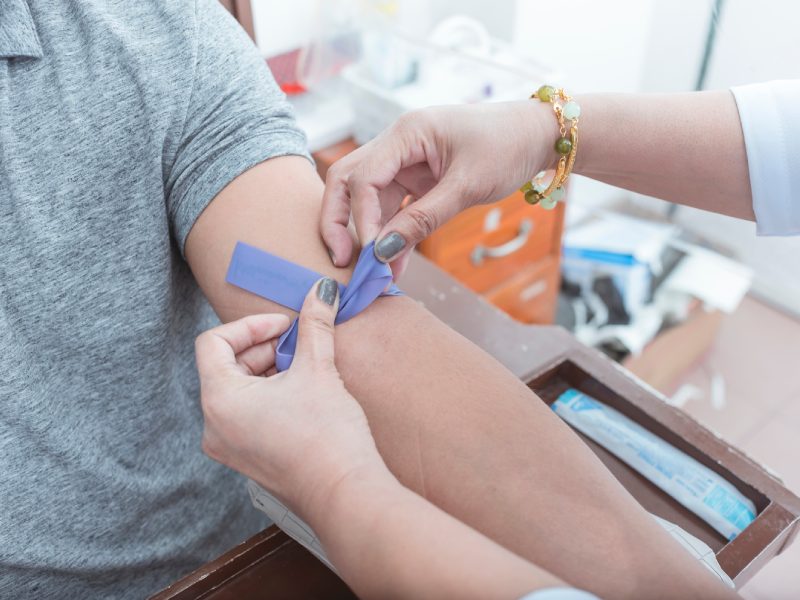With an expected growth rate of about 16 percent over the next 10 years, the role of clinical medical assistant (CMA) is an in-demand and rewarding career to pursue. Its endless possibilities for earning a higher wage and changing people’s lives makes pursuing CMA certification a smart decision.
Even better? You could complete your training in about 7 months with a course that is designed to work around your schedule and within your budget. Here is a look at how to become a CMA in Texas – And why our course at Careers Unlimited might be the best way forward.
Meet minimum requirements to enroll
Most clinical medical assistant programs in Texas have certain requirements you must meet before you enroll. These requirements ensure that you are ready to successfully engage with the coursework and clinical practice necessary to become a CMA. These requirements are usually minimal and relatively easy to fulfill. At Careers Unlimited, you are eligible to enroll if you are
- At least 17 years of age
- Able to pass a criminal background check
- Able to pass the employee misconduct registry check
A CMA career awaits you even if you did not complete high school. At Careers Unlimited, you are eligible to enroll if you have a high school diploma, but you can also pursue these two pathways if you did not get your diploma.
- Obtain your GED
- Pass An Ability to Benefit Test
Enroll in an accredited training course
In order to qualify to take your CMA certification exam, you will need to successfully complete a CMA training program that is accredited by one of these two bodies: The CAAHS or the ABHES. Most of these courses include the following elements:
- 160 hours combined of coursework and clinical training
- Instruction in office administration
- Instruction in drawing blood
- Training in basic laboratory procedures
- And more
Alternatively, in order to qualify to take the CMA certification exam, you could complete 1,000 hours of CMA experience after completing a college degree.
Clearly, completing an accredited training course is one of the fastest ways to pursue your new career. When you choose Careers Unlimited, you could complete your training in as little as 7 months and be certified and working within a year.
Pay your training program fees
One of the unavoidable aspects of training to be a clinical medical assistant is the presence of training fees. These costs will mean that you have to find a way to afford the exciting steps you are taking to prepare for your future. And, in the long run, your work as a CMA is likely to more than pay for the cost of your program.

However, affording your program in the short-term may cause some stress. That is why, at Careers Unlimited, we are dedicated to making your training fast and affordable. Our program offers financial support for those who qualify, in order to put your new careers within your reach. Here are some of the options we offer:
- Flexible payment plans
- Specialized scholarships
- Flexible schedules that allow you to work and study
Take your certification exam
The state of Texas does not require you to have a CMA certification in order to work in this role. Occasionally, an employer may offer on-the-job training in lieu of a certification. However, most employers will require certification before hiring you. As a result, it is in your best interest to pass the exam in order to maximize your employability and chances of success in your new career.

CMA certification is available through the American Association of Medical Assistants. This test, which is administered by the National Board of Medical Examiners, includes the following elements:
- 200 multiple-choice questions
- 180 scored questions
- 20 pre-test questions
Before you sit for this exam, you will need to submit an application to sit for the exam. You will also need to pay any relevant exam fees.
Once you are certified, you will need to renew your certification every 5 years.
Where can you work after becoming a CMA in Texas?
The role of clinical medical assistant is a flexible one, allowing you to work in a wide variety of healthcare settings. Here are some of the places you could pursue employment after completing your certification:
- Medical offices
- Outpatient clinics
- Health maintenance organizations
- Public health agencies
- And more
Thanks to this flexibility, you can enjoy your new career wherever is most convenient for you and your family. Becoming a CMA in Texas can change your life for the better – Without requiring you to give up too much of your current life.

Are you ready to become a medical assistant in Texas? Enroll in Careers Unlimited! In addition to CMA training, we also offer other courses that can help you get a head start on your healthcare career. Pursue roles such as becoming a CNA through our CNA classes, take a patient care technician course or a hybrid phlebotomy course. You could even become a network support specialist! Apply today for a career that can support the future you desire!
The allied healthcare sector has grown considerably over the last few decades. This growth has also generated a lot of jobs. Phlebotomy is one such sector where more and more jobs are being created each year.
A career in phlebotomy offers a stable income. Also, the number of jobs available to phlebotomists is expected to increase over the next five years. This makes it an ideal option for candidates who want a secure job shortly after they graduate high school. A phlebotomy training program can be completed in as few as 4 to 8 months.
A phlebotomist is a healthcare professional who draws blood and collects the tissue samples of patients. This job requires some training and certification.
The Role of the National Phlebotomy Association (NPA)

As the need for entry-level healthcare professionals increased, quality was often compromised and sometimes even those who lack adequate training were appointed. This lowered the quality of service delivery. To prevent this, the National Phlebotomy Association (NPA) was created in 1978 in Washington, DC. NPA provides phlebotomy certification and maintains a Board of Registry of all phlebotomists who have successfully earned the certificate. NPA phlebotomy certification offers a lot of benefits. A certified phlebotomist has a better chance of getting placed. Also, the certification enhances the quality of care provided by the phlebotomist.
A Phlebotomist is an integral part of the healthcare team. Their key responsibilities include the following:
- Drawing blood from patients for laboratory testing. Once the blood is drawn, the phlebotomist applies pressure on the area of injection to prevent bleeding.
- Entering patient information into the database
- Labeling the biological samples accurately
- Cleaning and sterilizing the equipment used for drawing blood or collecting tissue samples.
- Sending the biological samples for laboratory testing
- Making sure that patients are comfortable while their blood is being drawn
- Explaining the process to patients and putting them at ease
Sometimes phlebotomists take blood pressure or pulse. Phlebotomists can work in a hospital, laboratory, or physician’s office. They may also find employment in blood donation facilities. Sometimes they have to visit patients at home to draw their blood. Work hours can vary. Depending upon the size of the facility you are working for, you may work day, evening, or night shifts. You may also have to work on weekends.
Who should get the Phlebotomy Certification?

Phlebotomists aren’t the only professionals who benefit from a phlebotomy certification. It benefits a variety of other professionals as well. These include
- Registered Nurses (RN)
- Certified Nursing Assistants (CNA)
- Medical Assistants (MA)
- Emergency Medical Technicians (EMT)
- Licensed Practical Nurses (LPN)
In some states in the US, nurses who draw blood are required to have a phlebotomy certification. Even if your state does not require this certification, it is still worth getting it. Most registered nurses and vocational nurses can earn their phlebotomy certification in as few as one or two days. This is because as a nurse, you may have already drawn blood from several patients. If you have drawn blood from at least 30 patients, you do not have to complete the phlebotomy course. You can directly sit for the phlebotomy certification exam.
There is currently a shortage of nurses in the US. At the same time, many nurses are struggling to get hired. This is usually an indication that too many nurses are competing for jobs in the same market. In this situation, getting a phlebotomy certification will help you stand out. Nurses do not normally receive much training in drawing blood. They typically learn this skill on the job. Consequently, many nurses, especially those who have just started working, lack the confidence to draw blood. This is where a phlebotomy certification comes in handy. It equips you with this important skill and also gives you an edge over other nurses competing for the same job as you.
Important certifications also allow entry-level nurses to negotiate a higher salary.

In order to sit for the phlebotomy certification, you should possess a high school diploma or GED. You should also have completed a phlebotomy training program within the last 5 years. Those who haven’t completed a phlebotomy training program can also apply if they have worked as a phlebotomist for at least 1 year under supervision within the last 3 years. The exact requirements can vary from one certifying body to another.
Several certifying bodies offer certification in phlebotomy. These include:
- American Certification Agency (ACA)
- American Society of Clinical Pathologists (ASCP)
- American Medical Technologists (AMT)
- American Medical Certification Association (AMCA)
- National Center for Competency Testing (NCCT/MMCI)
- National Healthcareer Association (NHA)
How to get your phlebotomy certification?
The first step is to ensure that you fulfill the requirements to take the certification exam. You can apply online and then download the application handbook. If you pass the exam, you will receive the certification. Once you receive the certification you can apply for jobs.
Note that a phlebotomy certification is not mandatory to start working as a phlebotomist. Still, getting it is a wise move because it improves your chances of getting hired. Also, certified phlebotomists can negotiate a higher salary.


